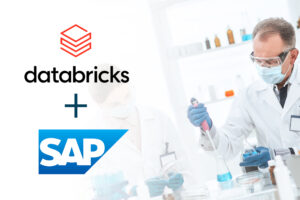The leading roles in Agile Methodology and their responsibilities
Table of Contents
Agile is a project management methodology that involves breaking down a project into short segments to be quickly developed. Either with Scrum or Kanban, the project management structures of Agile bring techniques of adaptability, flexibility, and innovation.
Which are the critical roles in Agile?
The amount of roles you can find in an Agile team depends on the framework, the project’s scale, and the size of the team. Usually, there are three different roles in a team:
- Agile team member / Developers or Specialist
- The team leader or Scrum master
- Stakeholders or people with the power to impact the project without being part directly. They play an essential character in the Agile development process.
There are several critical differences between the roles in an Agile team, and it’s primarily due to the team’s approach, either organization or a traditional approach.
Agile Team Member
Team members are the makers. It is complemented by front- and back-end engineers to designers. They are generally called developers. Agile teams are flexible and responsive. It’s their responsibility to ensure that they are delivering great value.
Agile teams are also called a whole team, meaning that it’s a team with the knowledge to work through “anything,” which keeps them so attractive to businesses. Agile teams have the extreme programming experience that will help with different developing skills to achieve the success of any project.
Agile teams are generalists and specialists. The generalist has technical proficiency with general knowledge of software development that can directly value the team. The IT professionals are the ones who work toward a specific goal and specialize in one area only.
Agilists work to keep teams stable. The results are much easier to achieve when everyone knows what they can provide and feels the confidence to add their knowledge.
The requirements for these positions frequently are detailed with testing, robust database and user interface skills, team-player attitude, and excellent communication skills.
If you want to learn more about what requires an agile developer to work in the industry, check our page of careers available.
Agile team members responsibilities:
- Programming
- Designing
- Writing
- Testing
- UX
They are the ones that get things done.
Their process goes from accepting assignments, working independently or collaboratively, to consulting innovative ideas on each other or the Scrum Master.
The team members should have skills that would allow them to self-organize and communicate easily with the other parts, so they can take corrective procedures if an issue occurs.
Not every member is an engineer. Developers and programmers usually construct even though the team, their skills can vary because they are responsible for the modeling, programming, testing, among other activities.
In addition to the skills required, they usually add specialists in product development, designers, and writers.
The essential responsibilities of an Agile Team round in performing work as the specifications provided by the Product Owner and organized by the Scrum Master. These activities allow the team to incorporate changes necessary in any future tasks based on the feedback from the Product Owner.
Agile encourages autonomy and creativity but expects efficiency and results. That’s the obligation that the team of developers carries for any project given to them.
Scrum Masters
The Agile teams usually divide between whether they use Scrum or Kanban. In this case, we are going to focus on Scrum.
Scrum is a framework for developers to build their processes on top of it. And by itself has three roles: product owner, Scrum Master, and the development team members, which we mentioned previously.
The product owner represents the business and declares what is the most important to deliver. It is the team’s face, and there has to be excellent communication and trust with the Scrum Master. They have to prioritize the tasks of the team and take any input the stakeholders give.
According to Atlassian, the product owner “should not only understand the customer but also have a vision for the value the scrum team is delivering to the customer. The product owner also balances the needs of other stakeholders in the organization.”
Finally, the Scrum Master is the one with the responsibility of holding it all together and assuring that Scrum is well done. In functional terms, they help the product owner define the value while the development team delivers. The scrum master is a leader that not only supports but dictates the priorities on a day-to-day basis.
A scrum master also works closely with the business at large, meaning it helps understand what Scrum is and creates an environment that supports Scrum for successful results.
The scrum master responsibilities:
- Implementing changes and facilitating the daily Scrum and Sprint leads
- Coordinating within stakeholders
- Communicating and coaching team members about evolving requirements and plans
- Helping Product Owners optimize the planning for maximum performance
- Managing administrative tasks like meetings, collaboration, and eliminating obstacles that might be affecting the project progress
- Shielding team members from external distractions
When it comes to the responsibilities of a Scrum Master, they have to inspect and support. The scrum master makes the scrum teamwork in an adaptable, effective, transparent way. It has to take the instructions from the Product Owner and secure that the tasks are performed right.
They have to approach ideas for the projects that fit the best, break down the work, describe possible outcomes, and review them.
But the Scrum Master isn’t just in charge of the project; they are responsible for the team. It has to encourage the members to step outside their comfort zone and try to use and learn different practices, to challenge the boundaries and responsibilities for the growth and success of the team itself.
For example, they have to create story maps, update Confluence pages with retrospective ideas and feedback.
Scrum has to be defined by values and expertise. It has to be courageous, focused, committed, respectful, and create a safe and trustworthy environment. Following values is the responsibility of everyone in the scrum team, but the scrum master has the active role of reminding them and applying them by example. Having this space is vital for agile teams to thrive.
Does every team need a Scrum master? Yes and no. If every single one of the team members is comfortable with their Agile methodology experience, it might not need a specified leader. Yet, the recommendation is to have one because it’s the glue that can make the results more straightforward and better.
Stakeholders
Lastly, we have the stakeholders. They’re the ones who are not directly part of the team yet still care how the project turns out and have the power to create an impact in the process. They are in charge of development advances.
Stakeholders responsibilities and the importance of a Product Owner
The Stakeholders have to keep a good relationship with the Product Owner, which we established that are the ones that help to transform ideas into concrete stories as well as decide which ideas to prioritize. They are the bridge between customers, their needs, and the team, so they are responsible for understanding the requirements clearly and communicating them.
The stakeholders help in this prioritizing process to share details needed regarding the project. Their main objective is being able to prioritize successfully so the work can be done effectively.
In the Product Owner role, the person needs to balance constantly between reactive and proactive work tasks. It needs to bring realistic management of expectations between the business and the team.
Both positions need a fantastic communicator who can provide Scrum with a task list with defined goals. So they can review the finished product before the final delivery to the client.
Want to be extra Agile? Take into account three more influential roles
Usually, when it’s a big project or a large company with complex requirements, it needs teams to go the extra mile. There are three more roles that can be very helpful in the process.
- An Agile coach. An Agile specialist is responsible for teaching Agile principles and methods for the company and the teams who might need quicker learning progress.
- An independent tester. In software, the industry is never negative-going a little too far for safety and innovation. The work of a tester comes in when there is a new product or code before going live, is a failsafe for catching anything missed.
- An integrator. Agile software projects take around three or more Scrum teams working together; the integrator gives that extra help to keep the requirements clear and the process neat.
Do you need an agile team?
The Agile methodology requires flexibility and adaptation in any project; it quickly responds to changes and modifications. They assure maximum customer satisfaction in a quick, effective process.
These leading roles express who an Agile team means: communication, problem-solving, technical and creative development skills to execute a project in the best possible way.
Want to learn more about Agile?
We have an Agile blog where you can check how it is like to work with this methodology, and you can learn with different classes at Open Classes or Coursera.



